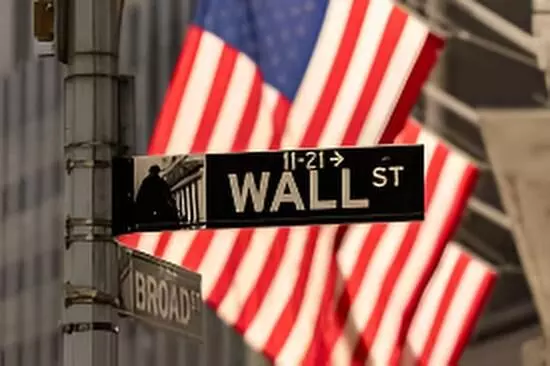Wall Street Suffers Worst Day Since April After Trump Announces 100% Tariff on Chinese Goods
Wall Street suffers its worst day since April as President Trump announces new 100% tariffs on Chinese imports, reigniting US-China trade war fears and shaking global markets.
Wall Street reels as President Trump’s 100% tariff on Chinese goods sparks a global market sell-off.

On Friday, global financial markets sank dramatically after US President Donald Trump declared a new 100% tariff on all Chinese imports starting November 1 as a response to Beijing's limiting of rare earth mineral exports. Trump's action stirred up the fears of a US-China trade war again; thereby investors worldwide were affected negatively.
📉 Wall Street Reacts: Major Indices Tumble
The S&P 500 slipped 2.7%, which was its worst showing since April, and the Dow Jones Industrial Average decreased by 878 points (1.9%) and the Nasdaq Composite fell drastically by 3.6%. Initially, markets were on the rise, but the sentiment changed drastically and quickly with the post of Trump on Truth Social, leading to a rapid sell-off in all the sectors.
“Based on the fact that China has taken this unprecedented position... the United States of America will impose a Tariff of 100% on China, over and above any Tariff that they are currently paying,” Trump wrote on his platform.
He added that “there is now no reason” to meet Chinese President Xi Jinping, despite prior plans to do so during his upcoming visit to South Korea.
💼 Why Trump Raised Tariffs
Trump’s latest tariffs target China’s decision to limit exports of rare earth minerals, vital for manufacturing electronics, electric vehicles, and jet engines.
The US President described it as “a massive increase” aimed at countering China’s “hostile trade practices.”
His announcement triggered panic selling, with six out of every seven stocks in the S&P 500 closing lower.
📊 Wall Street’s Vulnerability Exposed
Analysts said markets were already stretched before Trump’s announcement. US equities have surged nearly 35% since April, raising concerns about overvaluation relative to corporate earnings.
Technology and AI-linked stocks suffered the sharpest losses amid fears of a speculative bubble similar to the dot-com crash of 2000.
“For prices to stabilize, either profits must rise or stock prices must fall,” said analysts, suggesting Friday’s plunge may represent an overdue correction.
🛢️ Impact on Oil and Commodity Markets
- The tariff shock rippled into commodities.
- US crude oil prices dropped 4.2% to $58.90 per barrel,
- Brent crude fell 3.8% to $62.73 per barrel.
Oil prices were further pressured by reports of a potential ceasefire between Israel and Hamas, easing fears of supply disruptions in the Middle East.
Economists warned that escalating tariffs could slow global trade, reduce industrial demand, and dampen energy consumption worldwide.
💰 Consumer Confidence Worsens
Adding to the market gloom, the University of Michigan’s consumer sentiment index showed that Americans remain anxious about inflation and job security.
“Pocketbook issues like high prices and weakening job prospects remain at the forefront of consumers’ minds,” said Joanne Hsu, Director of the Surveys of Consumers.
The report noted a slight decline in inflation expectations, offering minor relief to the US Federal Reserve, which recently cut interest rates to support slowing growth.
🌍 Global Market Fallout
The sell-off extended across Asia and Europe:
- Hong Kong’s Hang Seng fell 1.7%,
- France’s CAC 40 slipped 1.5%,
- South Korea’s Kospi, reopening after a holiday, gained 1.7%.
Economists caution that a renewed US-China trade confrontation could disrupt global supply chains, weaken export-driven economies, and potentially slow growth in emerging markets like India, particularly in manufacturing, technology, and export sectors.
📈 In Summary
Trump’s aggressive tariff escalation has reignited global trade tensions, rattled investor confidence, and exposed the fragility of recent market gains. With the tariff set to take effect on November 1, analysts expect continued volatility as investors brace for the next phase of the US-China economic standoff.

